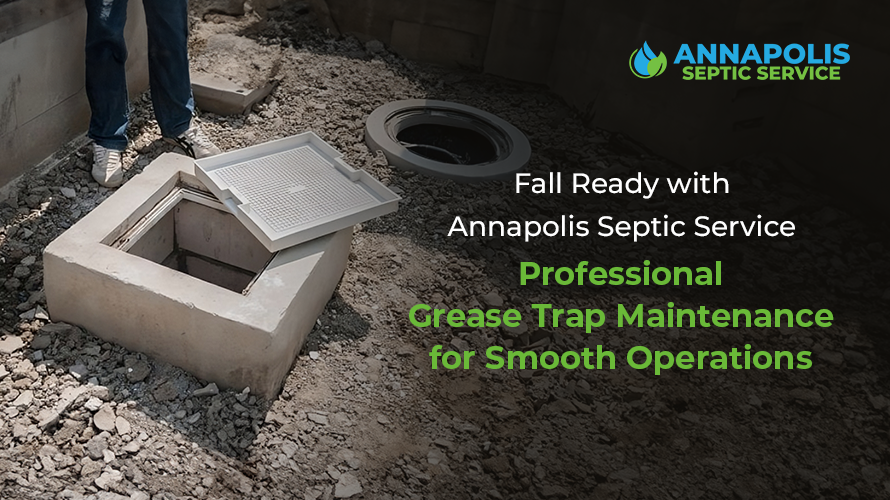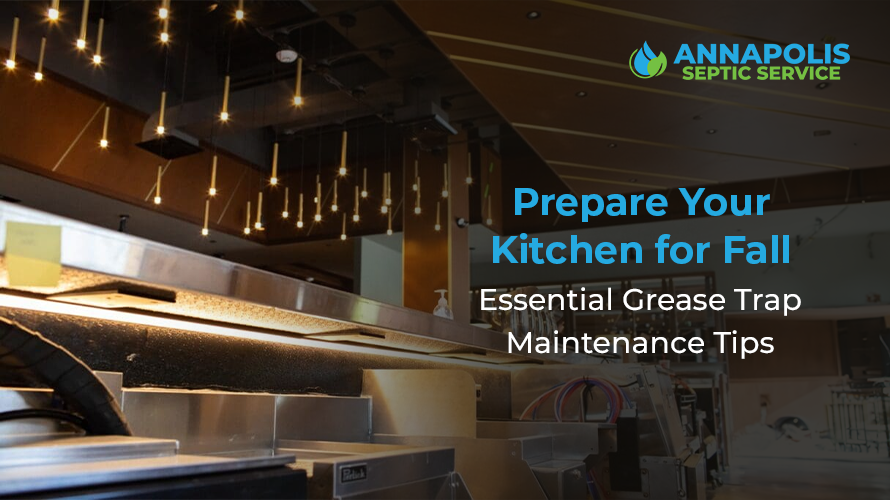As the fall season sets in and the weather turns cooler, many commercial kitchens see a significant increase in activity. This is due to holiday events, more dining out, or seasonal menu changes. But with this surge in activity comes an equally important responsibility—ensuring your commercial septic system is in top shape. A critical part of this is ensuring your grease trap maintenance is up to par. Ignoring this can lead to serious plumbing issues, health violations, and even temporary closures. So, what’s involved in keeping your grease trap in top shape? Let’s break it down.
Understanding Grease Traps and Their Importance
A grease trap, also known as a grease interceptor, plays a vital role in any commercial kitchen’s plumbing setup. Its main job is to capture and separate fats, oils, and grease (FOG) from wastewater before it reaches the main sewer system. This prevents clogs and backups in your pipes, which can cause major disruptions to your kitchen’s operations.
So, why is it crucial to maintain your grease trap? Without proper upkeep, grease traps can become breeding grounds for bacteria, create unpleasant smells, and even allow grease to flow into the public sewer system. This affects the environment and can lead to fines or legal issues. Regular maintenance is key to preventing these problems and ensuring your kitchen runs smoothly.
Seasonal Maintenance: Preparing for Fall
As the seasons shift, so do the demands on your kitchen. With the arrival of fall, increased cooking for holiday events, and cooler weather, your grease trap will work harder. To make sure it’s up to the task, follow these key steps to prepare your grease trap for the fall season:
1. Inspection and Cleaning
Before the fall rush starts, arrange for a professional inspection and cleaning of your grease trap. A certified technician will thoroughly check the unit to ensure it’s in good working order. Regular inspections help catch potential issues early before they escalate.
During the cleaning, the technician will remove built-up grease and sludge. This is essential because excess grease can lead to blockages and reduce the effectiveness of your grease trap.
2. Check for Leaks and Damage
Take a close look at your grease trap for any signs of leaks or damage. Even small leaks or cracks can become major problems if not addressed promptly. Ensure all connections and seals are secure, and the unit is in good shape.
3. Review and Adjust the Maintenance Schedule
You may need to adjust your maintenance schedule based on the inspection results. With increased use during fall, more frequent cleanings might be necessary to keep your grease trap performing well.
When to Schedule Grease Trap Maintenance
How often you clean your grease trap depends on the volume of FOG your kitchen produces. Most experts recommend scheduling commercial grease trap maintenance every 30 to 90 days, which can vary based on your kitchen’s activity level. However, if you notice any of these warning signs, it’s time to clean it out immediately:
- Foul odors coming from the drains
- Water draining slower than usual
- Grease trap overflows or backups
In some areas, local health regulations may also dictate how often you need to clean your grease trap, so stay compliant to avoid fines or violations.
DIY vs. Professional Grease Trap Maintenance
It might be tempting to tackle grease trap cleaning yourself to save money. While handling commercial grease trap maintenance in-house is possible, it’s not always the best option. Cleaning a grease trap can be messy and time-consuming; without the right tools, it can be a real challenge. Plus, if the job isn’t done properly, leftover residue can cause your grease trap to fill up more quickly.
On the other hand, hiring a professional for grease trap maintenance ensures a thorough job. Experts have the right tools and experience to clean the trap effectively, removing all the grease, not just what’s on the surface. They can also check for any signs of wear and tear, informing you of any needed repairs before minor issues become major problems.
The Environmental and Legal Impact of Neglecting Grease Trap Maintenance
Ignoring grease trap maintenance isn’t just inconvenient; it can have serious environmental repercussions. If fats, oils, and grease (FOG) aren’t properly trapped and disposed of, they can end up in local waterways. This can lead to pollution and negatively affect marine life. Local regulations are strict about this to prevent such issues, and failing to keep up with grease trap maintenance can result in hefty fines or even forced closures for your business.
Moreover, a clogged grease trap can damage the commercial septic system, which can be costly. Regular maintenance helps protect your kitchen and the environment and keeps you compliant with the law.
Signs It’s Time to Replace Your Grease Trap
Even with regular commercial grease trap maintenance, every grease trap eventually ends its useful life. Typically, a grease trap lasts between 5 to 10 years, depending on how well it’s maintained and how much it’s used. If you notice frequent backups, unpleasant odors, or a decrease in its ability to filter fats, oils, and grease (FOG), it might be time to consider replacing it.
Keep an eye out for signs like rust or corrosion on the trap. These issues can lead to leaks, which can be dangerous and expensive. If your grease trap shows signs of wear, investing in a replacement sooner rather than later can prevent bigger problems and ensure your kitchen continues running smoothly.
How to Choose the Right Service for Grease Trap Maintenance
Finding the right service provider for your commercial grease trap maintenance is crucial. You want a reliable, experienced company that understands your kitchen’s unique needs. Look for providers with good reviews and a track record of working with commercial kitchens. You’ll also want to ensure they offer comprehensive services, including trap cleaning, inspections, and recommendations for any necessary repairs or upgrades.
Don’t be afraid to ask questions when choosing a maintenance provider. Make sure they’re familiar with local regulations regarding grease disposal and can help keep you in compliance. A trustworthy service provider will also work with you to create a maintenance schedule that suits your kitchen’s needs.
Annapolis Septic Service- Expert Grease Trap Maintenance and Commercial Septic Services

At Annapolis Septic Service, we understand the importance of keeping your commercial kitchen running smoothly. Grease trap maintenance is essential for preventing costly plumbing issues and ensuring your business complies with health regulations. As a trusted commercial septic service provider in Annapolis, we offer professional grease trap cleaning and maintenance services tailored to your business’s needs.
Our experienced technicians will thoroughly inspect and clean your grease trap, removing all fats, oils, and grease that can lead to clogs. We also provide routine maintenance plans to help you stay ahead of potential problems. Annapolis Septic Service proudly serves businesses in Bowie, Annapolis, Severna Park, Edgewater, Centreville, and surrounding areas.
Don’t let grease build-up slow down your operations. Contact us today to schedule a grease trap maintenance service and keep your kitchen running efficiently.

